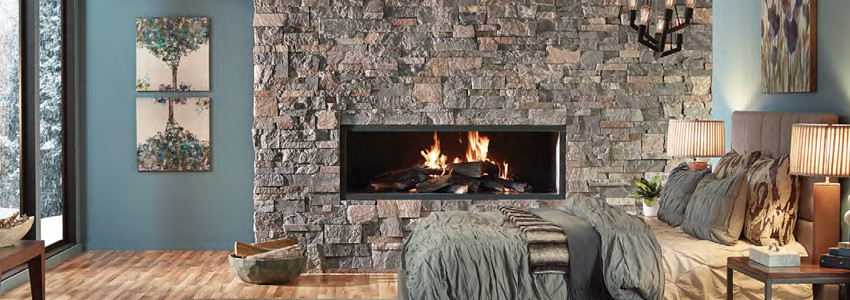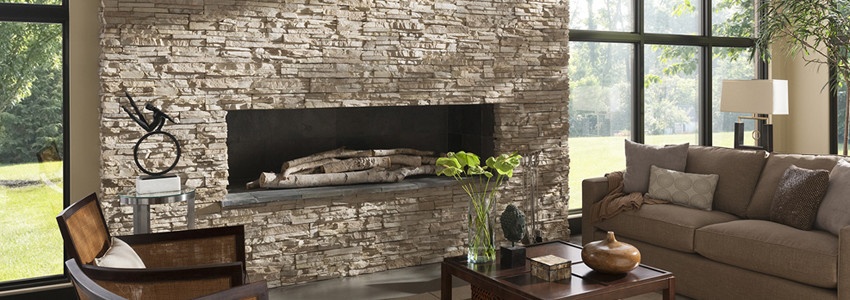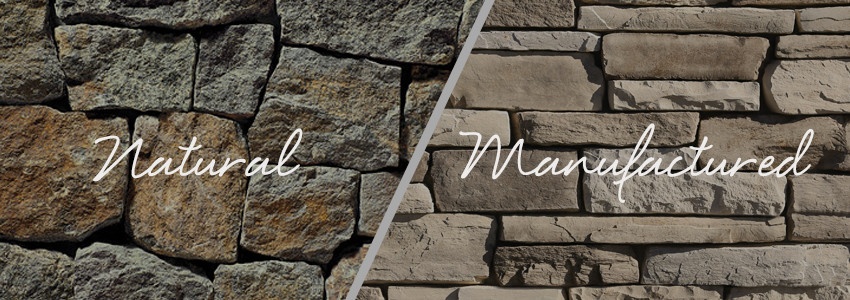Stacked stone has seen an incredible bloom in popularity in recent years. In the past, it was restricted to outdoor use in the form of exterior finishes and accents. Now, it can be found in kitchens, bathrooms, living rooms, and even bedrooms all across the nation. Adding this surface into your design plan can be a fantastic way to show texture and character while upping the value of your home.
Comparing Natural and Manufactured Stone
When using a stacked stone, you have two main choices: natural and manufactured. Each one presents a unique set of benefits and disadvantages, so it’s important that you select the best match for your project.
The Perks and Drawbacks of Natural Stone

Until recently, natural stone was the primary choice for stacked wall covering. Many people love it because of the natural color palette it offers. Each piece will reveal a special uniqueness that cannot be replicated by man.
Another great benefit of choosing natural stone is its durability. The covering will last hundreds of years, even in the face of harsh and direct sunlight. Natural stone does not fade, crack, or peel as a result of weathering. Even if it suffers impact damage, the stone will remain beautiful since it is consistent through and through.
The biggest disadvantage of choosing natural stacked stone is the cost. Retrieving it from the ground is labor intensive and difficult, driving up the expense. It’s also much heavier and harder to work with, meaning that installation is more challenging as well. Color choices can be limited as well since most natural stone is quarried locally due to the cost of transportation.
The Advantages and Disadvantages of Manufactured Stone

Man-made stone is quickly becoming the top choice for many home design projects. It is much lighter weight, meaning that it’s easier to work with. In addition, no fasteners or footings are needed for the installation, saving both money and time.
Manufactured stone also creates less waste. The pieces are specifically designed to fit with one another, meaning that no scraps are discarded because they do not match. Because of this, these bricks are more consistent in color and shape and provide a more uniform look. In many cases, they can even be customized to show off the perfect color and texture for your project.
The largest downside to using manufactured products are that they do not last as long as natural stone but can last beautifully for 50 years. If cracking occurs, it may be obvious that they are synthetic since the material is not consistent all the way through. Do some reseach and find a manufactured stone company that provides a warranty for their product.
Choosing the Right Product for Your Job
Selecting the proper match will protect your investment and help you get the maximum benefit from the installation. If you’re not sure, set your budget and visit a local supplier to see samples of their products to help make your decision.
Related Categories
Industry TrendsSarah Lograsso
As Director of Marketing and Portfolio Management, Sarah has successfully coupled her design talents with business acumen to refresh, refine and distinctly position five standout brands in the North American market and abroad. She continues to provide design direction for the brands’ variety of best-selling modern profiles and trend-forward color palettes while enhancing the prestige of the category among masons, builders, designers, architects and consumers.




Let Us Know What You Thought about this Post.
Put your Comment Below.